by Vee S.
Introduction
Last year I wrote a post about the “Acceptance” Narrative in Trans YA. That post detailed my thoughts on three problematic books that feature cis characters lamenting how hard it is to know someone who is trans. Today, I want to talk about another issue of representation in trans YA, and a narrative that is even more common. This post is kind of a second blush look at representation in trans YA. The “acceptance” narrative covered the really problematic representation, and this post tackles the next, more nuanced stage.
Today I’d like to talk about the Hero’s Journey in Trans YA. Most trans YA books told from the point of view of a trans character follow an eerily similar narrative. Casey Plett, author of A Safe Girl to Love, has written about this phenomenon in trans adult books. She has termed these homogenous books “Gender Novels.” In the Gender Novels, “each protagonist is a chosen one, a lone wolf plodding on against adversity. They do no wrong; they remain gentle and stoic in the face of difficulty.” In short, being trans is presented in such a way as to enable the reader to relate their life struggles to the experience of being trans. While I’m sure these books have been written with the best of intentions, this narrative forwards some dangerous ideas. In addition, it is now simply overdone. We need to expose it and move on. Cisgender readers need to be aware of this narrative, their reactions to it, and open their gaze to what other trans stories might be out there.
Before I begin critiquing this narrative, I want to say: these books have their place. The first few trans YA books I read meant so much to me. When I picked up my first trans YA, I didn’t know that within the year I would identify as trans. I didn’t realize the shame I carried around being trans, and I literally didn’t know that trans people could be happy. That first trans YA book I read played a major part of opening a door sealed shut by shame and misunderstanding. I look back at that book now, and wince, because I see all the major flaws in the representation. But it was so important to me then. My experience with that book has made me a firm believer that a book does not have to be perfect for it to be enough for a trans teen.
I also want to be clear that it is not my intention to shame anyone who enjoyed a book with this narrative in it: that is unproductive and unhelpful. The problem is not in a single book, or a single author, or a single reader. It is a structural problem that permeates the entire YA community. Fixing the problem requires awareness, and so my intention is only to educate.
With that said: shortly after I finished reading my first ever trans YA book, I soon read through the dozens of other trans YA books out there. As I tore through one after another after another, they started to feel less and less legitimizing and healing, and more stigmatizing. It started to feel like every time I started a new trans YA book, I had already read it. I developed a useless superpower: about fifteen pages into any trans YA, I can tell you what happens, and which characters will do what.
So what is this “Hero’s Journey” narrative?
- The book begins, and the trans character is ashamed of themselves/their body.
- Character starts to come out or to express their gender (sometimes the character is already out at the beginning, sometimes not)
- This is met with some adversity and some support (at least one parent is definitely unsupportive)
- Character pushes through, meets new friends, things are starting to look better
- The character is outed, then physically and/or sexually assaulted
- Character is upset, but doesn’t suffer any severe mental/emotional trauma
- Character realizes all they ever had to do was believe in themselves and the rest of the world would love/respect them
- Character looks daringly off into the hard but hopeful future
Why is this narrative problematic?
If you remove the character’s trans status, this is a typical “hero’s journey.” Replace “presenting as true gender” with “starting the quest” and “assault” with “the final battle” and you’re good to go.
The “hero’s journey” has been around since story first began. The narrative is supposed to be one that anyone can relate to, on some level. It’s a universal metaphor for struggle, for facing your demons, for learning and growing. So, in theory, that’s good, right? A trans character gets to be the main character in a book with this typical hero arc! Yay! Progress! Well, not so much.
The whole point of a hero’s journey is that it is a metaphor for a “universal” struggle, about perseverance, bravery, and overcoming fear. If you want to center a trans character in that, fabulous! These books, however, center marginalization. The trans character isn’t allowed to participate in this narrative as the sword-wielding snarky badass they are. Instead, they are relegated to a message.
Instead of using this narrative to point out the obvious– that cis people can relate to trans people because we are all humans and share many similar human experiences– these books say that you should relate to being trans. (Or rather, relate to one simplistic idea of what “being trans” is.) In an attempt to make the “trans experience” into the one-size-fits-all module, it simplifies the very complex realities of trans individuals.
In short, when marginalization is centered in the hero’s journey, it attempts to make the experiences of marginalized people “universal”. But, by definition, those experiences are not universal. In an attempt to garner sympathy and “understanding” for marginalized people, these books simplify the marginalization into a metaphor that non-marginalized people can use.
One example of how the hero’s journey really doesn’t work as a vehicle for the whole trans experience is the way it treats violence. In Casey Plett’s (brilliant) article Rise of the Gender Novel, she says: Transphobic violence “is real, but how it functions in these narratives is telling: it happens As a survivor of sexual violence, reading a book that uses assault like this hurts. The characters don’t come out of the experience broken or scared or traumatized; there is no time for those emotions to develop. Instead of allowing the character to experience even a fraction of the the long and complicated process of processing and healing from trauma, they’re launched into their victorious ending. The ending that is so often used as inspiration for cis people to “be true to themselves.” Over and over again, our pain is used, and misrepresented. To make the very people who make this world so terrifying for us feel good about themselves. Being trans is SO much more complex than what this narrative often shows. It’s scarier. It’s more constant. There is rarely an instant where you think “I’m definitely going to be okay for the rest of my life.” Often, it’s extreme discomfort with your body or parts of your body. It’s almost always an experience with suicidal ideation, often for an intense and/or prolonged amount of time. It’s nearly constant fear. Either fear of what people think if you come out, or, if you come out and start presenting differently, it’s fear of violence. That fear doesn’t ever fully stop. (Why do you think the transgender suicide rate is so high?) So no, you don’t get to use this experience of us “overcoming” fear. Because that never happens for us. Lest I leave you with the idea that trans lives are only endless suffering, however, I’ll end this section with a plea to read this excellent post from Elliot Wake, and this quote from April Daniel’s post Trans Stories Are Human Stories: “Being trans can be built up to be this profound, unknowable Thing, both sublime and terrifying. It’s not. Mainly it’s just a pain in the ass, just one damn thing after the other, like the rest of life, no scarier and more dangerous than any of life’s other big struggles. But like the rest of life, it can also bring profound joy, and exhilaration that is hard to describe. So being trans isn’t what hurts us; it’s being alone that does the damage.” Trans people have struggles and joys that cis people will never experience. And yet, we are still simply human. I understand the impulse behind the “hero’s journey” narrative. It is easy to market to cis readers, and in many ways, it is a really good first step: it does change minds and it does help trans teens. However, this narrative is not enough. As elementary school librarian Kyle Lukoff said in his recent post Second Trans on the Moon “acknowledging our existence and our humanity is a starting place, not an end point.” We need & want more. For Big 5 publishers, it is necessary to market trans books to cis people in order to make them profitable– there are simply not enough trans people to sustain a market. But because of the desire to appeal to cis readers, these books are made, edited, and published with cis people in mind. While the creative team may hope that trans teens get something from them, the writing, editing, and marketing decisions all cater to the cis gaze. But what would it look like if trans people were centered? I would like to argue that books can center trans readers and appeal to cisgender audiences. Here’s a great quote from Dear Cisgender People Who Write, Publish, And Read “Trans” Books by Constance Augusta Zaber: “Frequently I read interviews with authors or see publicity statements from publishers saying that they hope this book is able to help trans people. […] While I don’t think this idea is inherently wrong (I’m a big believer in the power of stories and representation) I want to know why cis people think that providing variations upon the same theme counts as meaningful diversity and representation. Why not show younger trans readers a world of possibilities? Why not offer an alternative from the one plot we hear over and over again in both fiction and nonfiction? And since I’m asking demanding questions I might as well ask: why not give trans youth some authors who are trans as well?” Ultimately, I’d love to see transgender authors become the keeper of trans stories. (This is not to say cisgender people cannot write trans characters– they can and they should. But that conversation is an entirely different post.) I want there to be dozens and dozens of trans authors. We’re inching toward that: transgender authors like Meredith Russo and Alex Gino are breaking into mainstream publishing with the help of amazing cisgender allies. But even with the number of us growing, even with our awesome allies in publishing, we still don’t get to decide on what our narratives look like. This “hero’s journey” narrative is holding trans writers back too. It has been decided upon as the palatable form in which cis readers will accept our stories. There are books being published through small presses that actually cater to a transgender gaze, like Spy Stuff by Matthew J Metzger and The Unintentional Time Traveler by Everett Maroon and the forthcoming Dreadnought by April Daniels– and those books are incredible and revolutionary. But a teen needs to be dedicated in order to find them. That unfortunately isn’t likely to happen, as most trans teens believe books like that don’t exist. So. Since there are many more cis readers than trans readers, to create a book that sells, it has to cater at least partially to the cis gaze. So, YA community? Your cis gaze needs to change. The thing is, I think we– cis and trans people alike– only stand to gain by centering trans people. Because this is not only a representation problem, it is also a craft problem. Like… okay look, I’m just going to say it. I don’t think these books are well-written. As Casey Plett said in her piece, “These novels aren’t just clichéd by the standards of transgender literature—they’re clichéd by any standard.” I personally find them tropey, clunky, and now that I’ve read over a dozen, simply boring. And I have a hunch that some cis readers feel the same way. Even if that’s not the case, there are now dozens of books that follow this narrative. Does the world really need more? So what are some new narratives? Well, in many ways, that’s like asking “what are some new narratives about cisgender people?” The possibilities are endless. To break it down a bit, however, I think there are two main things we need. Some specific things I’d like to see: Here’s a quote from another great post, Trans Representation in YA Is Only the Beginning, by YA author Everett Maroon: “I’m looking for the life after transition, the other aspirations these characters have, the friends who shape their lives, even the nonsense we all deal with—crappy teachers, hating algebra, escaping from one’s parents for an afternoon, sneaking into an extra movie at the cinema, getting one’s heart broken by that asshole who seemed so great before one went to second base with them. Trans people are not figureheads, tragic heroes, as untouchable as saints, they’re people. We make mistakes and we cry when we break our favorite coffee mug, and we stay up late at night reading terrific books and damn it we want to see ourselves in some of those books. Ourselves, not some person’s simplistic imagining of who we are.” Lastly, here’s an excellent list of story ideas that Imogen Binnie (author of the groundbreaking novel Nevada) would like to read/watch about trans women. These are just the tip of the iceberg. But it is these types of books– books that dispel the hero narrative– that will not only provide better representation, but will also be infinitely more enjoyable to read. This is not to say that simply changing the narrative will result in good representation– problematic and offensive representation can crop up in many other ways. (*coughs* here’s where I very subtlety pitch the fact that you can hire me as a sensitivity reader!) But I believe this is the next big step forward that our community has to take. Once we do away with this narrative, we can open up a much more nuanced and interesting discussion about trans representation. I want books like this, books that see trans characters as fully human instead of a message, to be spread to the teens that need them. Books that tell our stories truthfully, that don’t cater to the experience of cis readers. I want these books to get the same marketing that other “trans” books have gotten. So, how do we do that? The most fundamental way you can change things is beginning to center trans voices in every way possible. Here are some specific examples. If you are an editor or agent: please, seek out trans stories, and DIVERSE trans stories at that. Seek out trans stories by trans people. This is not to say cisgender people cannot write trans characters– they can and they should. (Two I’ve loved recently is When the Moon Was Ours by Anna-Marie McLemore and Not Your Sidekick by C.B. Lee) What they should not do is attempt to write about what it “means” to be trans. That is a story that, in my opinion, trans people alone should tell. Librarians & teachers: buy trans books from smaller presses. Make them available to your teen patrons/students. Do the work so that they don’t have to. Also, consider bringing trans authors in for events instead of cis authors! For all readers: buy books by trans authors, or request them from your library! You don’t have to stop reading or reccing or enjoying these books. But be aware of how you respond to this narrative, and know that it is not what the real life of a trans person actually looks like. It is constructed to garner sympathy, and to make you feel like a good person. Challenge the idea of trans pain as something you can learn from, in all aspects of your life. Mostly, support our stories in the form they come in. I think we’ll (hopefully) be seeing more and more diverse narratives, and I want to see those be as supported and celebrated as what we have now. Even if they’re tougher, and less inspiring for cis people. Those stories need to thrive. Thank you for taking the time to read this post. I know it’s a lot, and I’m so incredibly thankful that you took the time to listen to my perspective. If you have thoughts, questions, or comments, please reach out to me! Leave a comment below, find me on twitter @findmereading, or email me at vee@gayya.org. I’d really love to hear from you. — Centering Trans People in Fiction
New Narratives
What You Can Do: Fix Your Gaze
 Vee S. lives in Minnesnowta. They like books, writing, writing about books, theatre, and feminism. Vee is a volunteer at Addendum Books, a freshly-minted library aide, and the admin of GayYA.Org. Life goals include: becoming a teen services librarian, writing at least 10 queer/trans books, and eventually coming out to their parents. Find them
Vee S. lives in Minnesnowta. They like books, writing, writing about books, theatre, and feminism. Vee is a volunteer at Addendum Books, a freshly-minted library aide, and the admin of GayYA.Org. Life goals include: becoming a teen services librarian, writing at least 10 queer/trans books, and eventually coming out to their parents. Find them 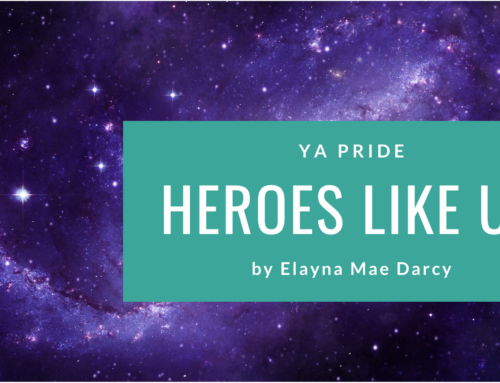
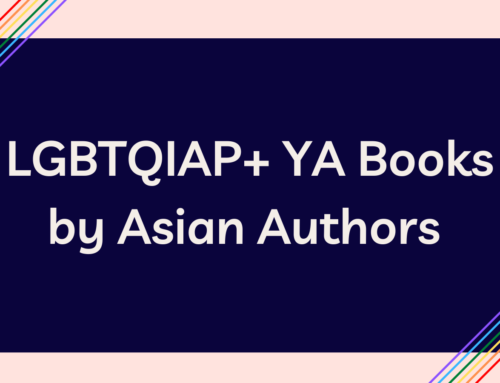
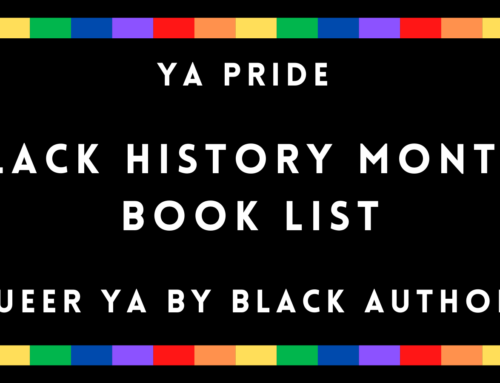
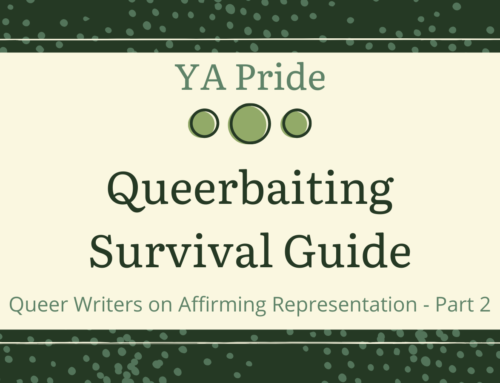
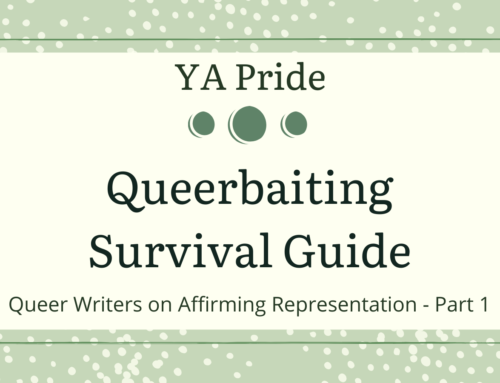
[…] Today I’d like to talk about the Hero’s Journey in Trans YA. Most trans YA books told from the point of view of a trans character follow an eerily similar narrative. Casey Plett, author of A Safe Girl to Love, has written about this phenomenon in trans adult books. She has termed these homogenous books “Gender Novels.” In the Gender Novels, “each protagonist is a chosen one, a lone wolf plodding on against adversity. They do no wrong; they remain gentle and stoic in the face of difficulty.” In short, being trans is presented in such a way as to enable the reader to relate their life struggles to the experience of being trans. While I’m sure these books have been written with the best of intentions, this narrative forwards some dangerous ideas. In addition, it is now simply overdone. We need to expose it and move on. Cisgender readers need to be aware of this narrative, their reactions to it, and open their gaze to what other trans stories might be out there. Before I begin critiquing this narrative, I want to say: these books have their place. The first few trans YA books I read meant so much to me. When I picked up my first trans YA, I didn’t know that within the year I would identify as trans. I didn’t realize the shame I carried around being trans, and I literally didn’t know that trans people could be happy. That first trans YA book I read played a major part of opening a door sealed shut by shame and misunderstanding. I look back at that book now, and wince, because I see all the major flaws in the representation. But it was so important to me then. My experience with that book has made me a firm believer that a book does not have to be perfect for it to be enough for a trans teen. […]